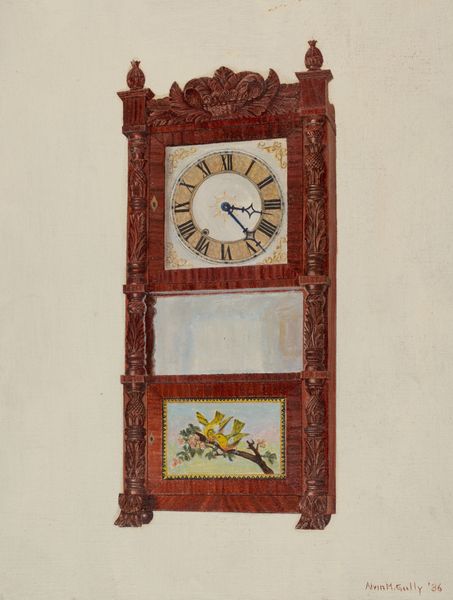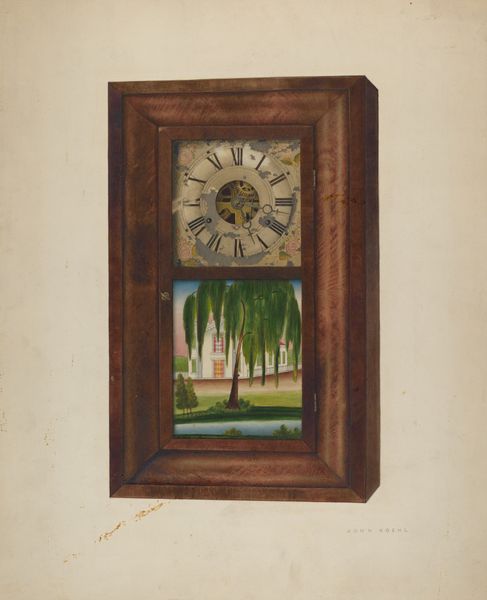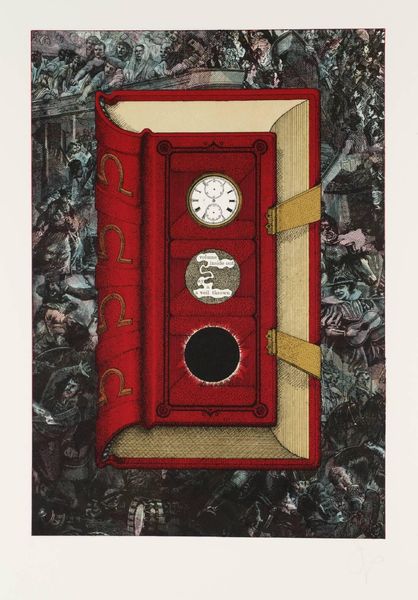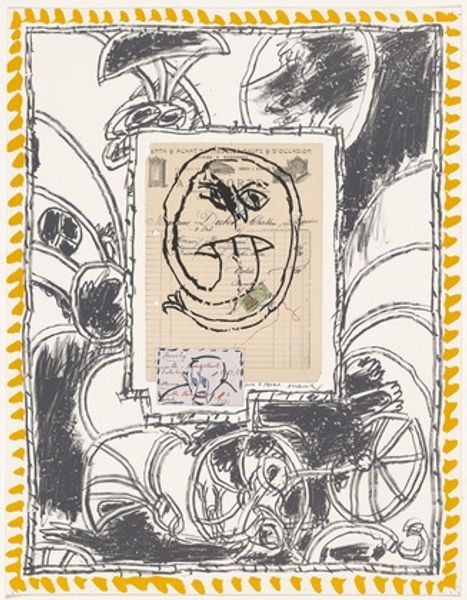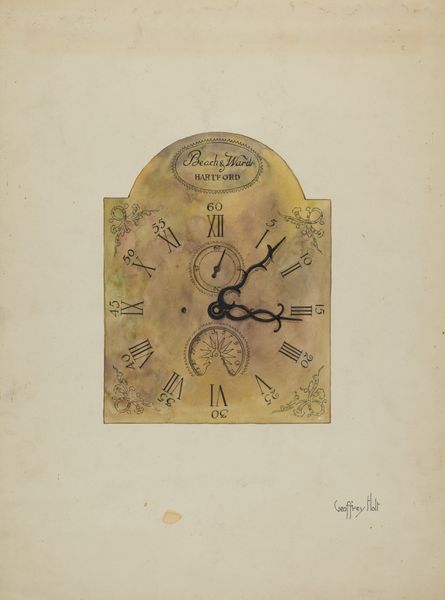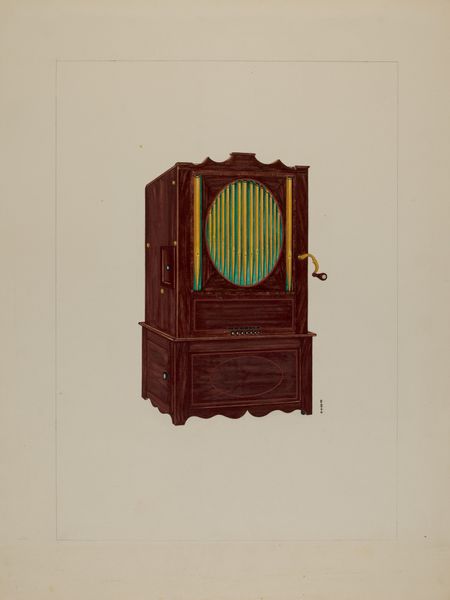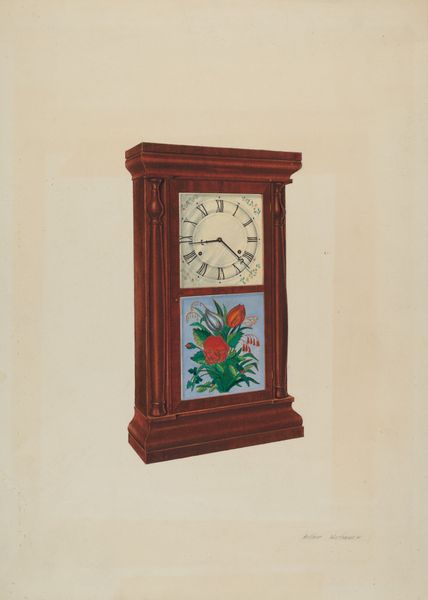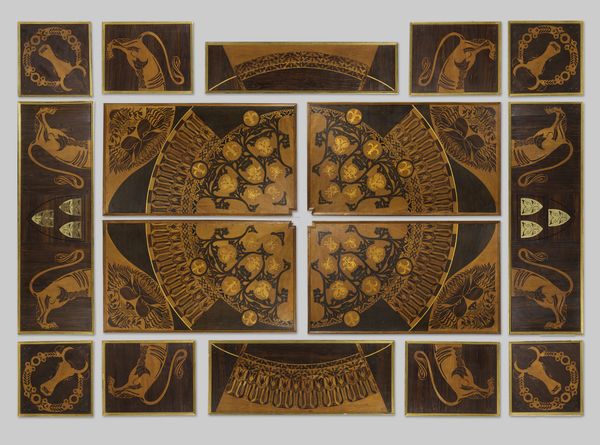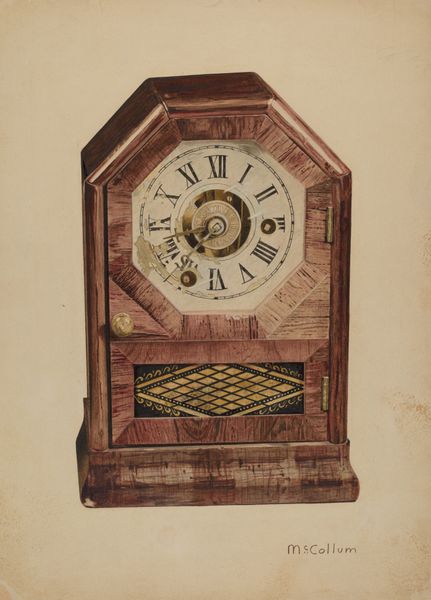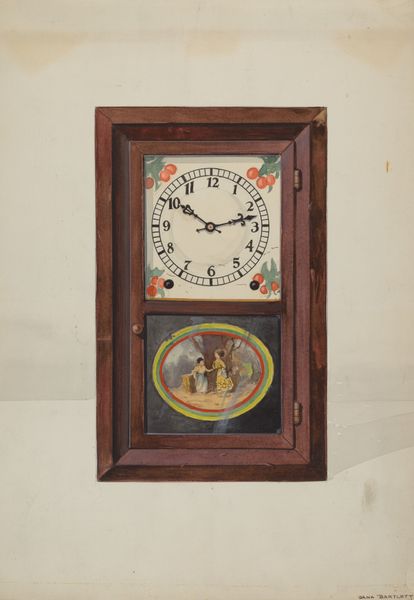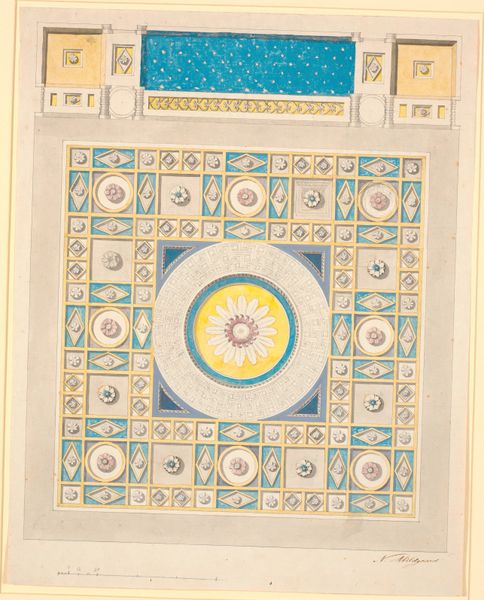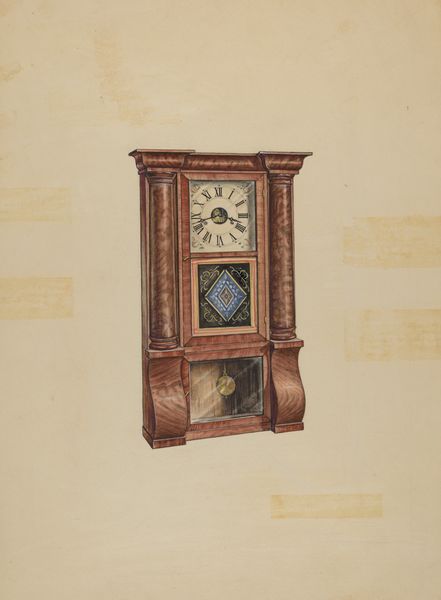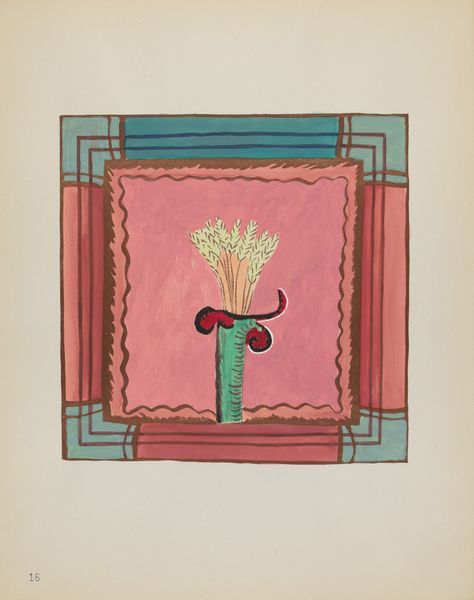
drawing, watercolor
#
drawing
#
water colours
#
watercolor
#
geometric
#
watercolor
Dimensions: overall: 35.4 x 26.9 cm (13 15/16 x 10 9/16 in.) Original IAD Object: 26 1/2" x 15 3/4" x 4 1/2"
Copyright: National Gallery of Art: CC0 1.0
Curator: This watercolor artwork is entitled "Clock" and it's attributed to Albert Eyth, around 1936. What strikes you initially about it? Editor: Well, it feels like time itself is fragmented, like a Cubist daydream. There's a clock, but then these little pastoral scenes peeking out... It's unsettling but whimsical. It is a puzzle with nested realities, is it not? Curator: It’s an intriguing visual play, layering imagery and questioning representation. Consider the date of the artwork - mid 1930s, the lead up to a cataclysm. This superimposition and re-framing could also be interpreted as reflecting anxieties about time. Editor: Exactly. Are we controlling time or is it controlling us? The bridge motifs repeat; are we crossing time to the same point or do things only appear similar? And I like the use of water colours. It softens some potentially hard edges and creates a sense of a past that seems to fade over time. Curator: Watercolor as a medium also opens a lot of symbolic possibility for discussions around transparency. These layering techniques draw us into considering how we perceive these distinct but ultimately artificial divisions such as clock time or geography. Eyth's background is as an artist who works with and for the public. Considering Eyth as a municipal artist how should we approach the question of meaning in this piece? Editor: I get a very different meaning, that everything overlaps – that all points are available always. What would the viewer of 1936 thought of this artwork, compared to a contemporary audience? Curator: Perhaps not so different from our own. As now, so then. What a piece makes one feel is just a response from where the audience stands. We might have lost certain associations with it or acquired completely different ones. Editor: It's funny. Despite being about a clock it leaves me less concerned with being punctual, if that makes any sense? Curator: Indeed. The work questions these frameworks and the social institutions they impose upon people, by deconstructing something that should be functional in such a poetic, if perplexing way. Editor: Right, it asks to get lost a little bit in thought. Thank you for those observations. Curator: My pleasure. Thank you too.
Comments
No comments
Be the first to comment and join the conversation on the ultimate creative platform.
